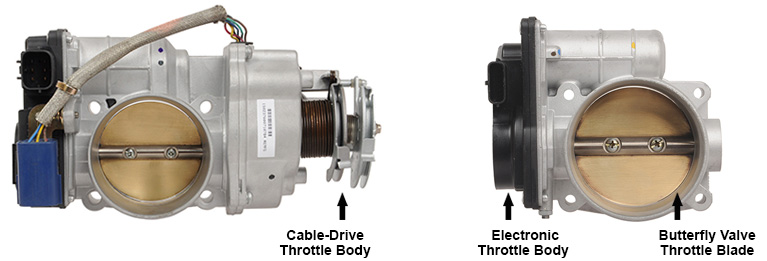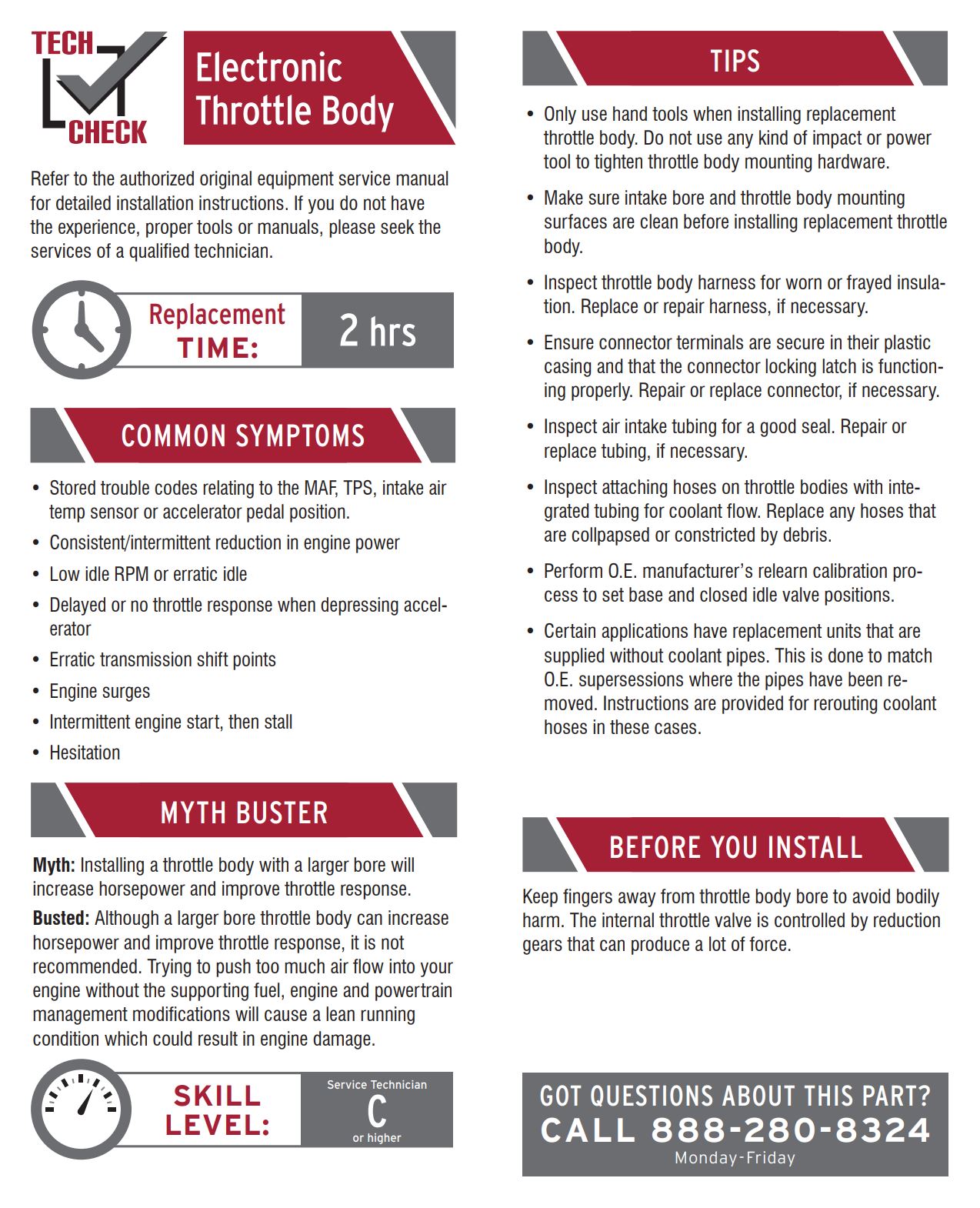Throttle Body Operation, Calibration and Symptoms of Failure
Still experiencing issues after a throttle body replacement? Let us help you find the fix!
What Does a Throttle Body Do?
The job of the throttle body is to allow a specific amount of air measured by the mass air flow sensor (MAFS) to enter the engine, based on throttle position.
- Older vehicles relied on carburetors to allow air and fuel to enter the engine. Over the years, carburetors were replaced by modern, electronically-controlled fuel injection systems featuring throttle bodies.
- Throttle bodies use a throttle blade, that opens and closes to regulate incoming air from the air intake duct to the intake manifold.
- Throttle bodies can be operated by a throttle cable (manual or cable-drive throttle body) or by a small motor (Electronic Throttle Body (ETB)). The images below illustrate the differences between the two types.
- On both styles of throttle bodies, a throttle position sensor (TPS) provides input to the engine control module (ECM) based on the throttle blade angle.

Symptoms of a Faulty Throttle Body
A faulty throttle body can induce several drivability issues and DTCs (diagnostic trouble codes).
- Poor throttle response – A sticking throttle blade or an incorrect signal from the TPS to the ECM will cause a mismatch in engine speed relative to how the driver operates the accelerator pedal.
- Check engine light illuminated – The ECM will set a fault code when it receives an incorrect input/output signal from the throttle body or a problem with the circuit.
- Rough idle – Throttle blades can become coked with carbon, causing them to stick in a position.
- Engine randomly shuts off – A throttle blade stuck in the closed position can cause lower than normal engine idle speed, often resulting in a stalled vehicle.
Throttle Body Idle Air Calibration After Installation
An electronically controlled throttle body will require an idle air calibration after installation.
- This calibration can vary by vehicle manufacturer.
- Most manufacturers require an OBD-II bidirectional scan tool to perform the calibration. Some manufacturers have published manual calibration and relearning methods. However, it is recommended to perform this step with a scan tool that will support ETB relearning.
Learn More
To learn more about idle air calibrations, please view our videos on manufacturer-specific calibrations. For more symptoms, install tips, and best practices, please view our CARDONE Tech Check.

